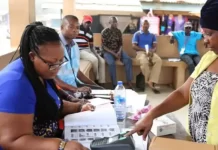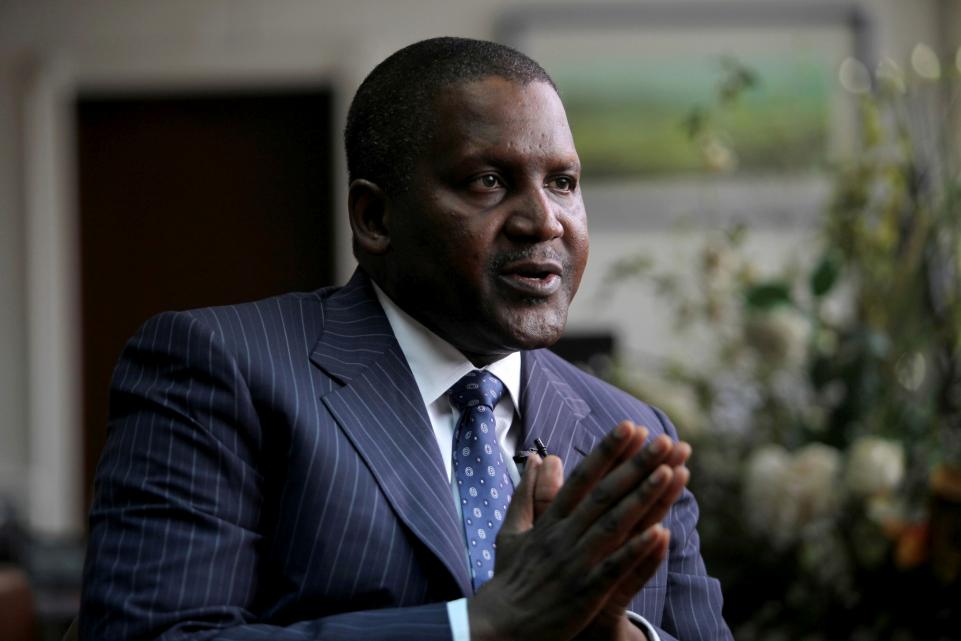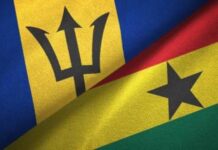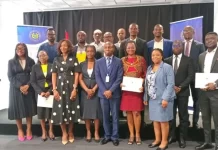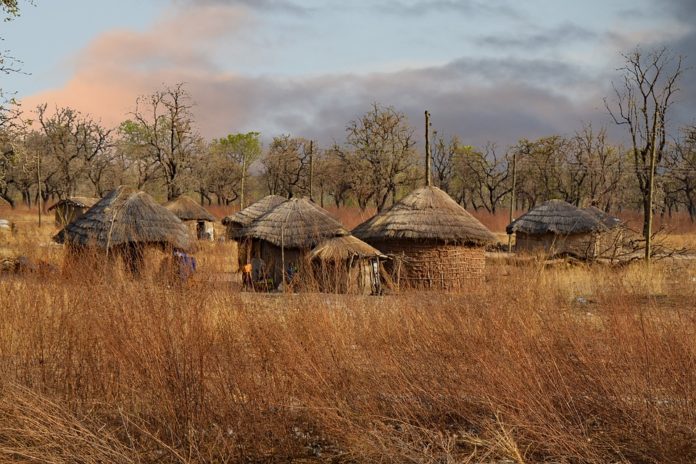
A number of chiefs and opinion leaders from several parts of the country have petitioned the President, Nana Addo Dankwa Akufo-Addo, to create new regions for their respective areas of jurisdiction to accelerate development. The President, based on the petitions received, and in consultation with the Council of State, appointed a commission of enquiry to ascertain the needs and make necessary recommendations on all factors involved in the creation of new regions. The following are issues and development challenges that the Commission and policy makers should consider concerning the creation of the regions.
Difficulty in Achieving Regional Balance in Appointments
Article 76 (1) of Ghana’s constitution states that the President and the State shall achieve reasonable regional and gender balance in recruitment and appointment of his Cabinet and other public officials. The objective is to ensure that all parts of the country are represented in his appointments. Creating more regions will make it more difficult for the President to adhere to regional balance in recruitment and appointment to public offices. An effort to balance a 19-member cabinet from a greater number of regions will be more difficult, and could lead to the selection of people who may not necessarily be able to contribute much to meet the aspirations of the President.
Lack of Resources to Fully Decentralize
An observation of the state of the new districts created recently in Ghana could provide valuable lessons in this quest to create more regions. While the old districts have remained skeletal administrative units with a narrow tax base that cannot raise sufficient revenue, many of the district assemblies created between 2007 and 2012 still do not have finished and functional meeting places for assembly members or official residential facilities for DCEs, etc. Therefore, the act of creating new regions or districts by itself, does not necessarily translate into improved service delivery for the people and the creation of new regions may end up perpetuating a similar situation.
The Ghana Infrastructure Plan to Address Infrastructure Deficits
It is clear that what most of the petitioner regions need is infrastructure. The NDPC, with assistance from public and private sector experts, has prepared the Ghana Infrastructure Plan (2018 – 2047) to address infrastructure challenges that the country faces, particularly in the provision of roads and railways, electricity, water supply, sewerage and waste management, housing, etc. Sources for funds for the implementation of the plan have also been identified. Roads in particular constitute a highly important and most sought after infrastructure. As part of the preparation of the GIP, a demographic analysis was undertaken to identify the inequalities in the distribution and delivery of road transport infrastructure in Ghana. This information and the transport distribution data were used to establish the length of roads to be developed in each region as indicated below:
Regional Breakdown of New Roads Planned Under the Ghana Infrastructure Plan by 2047
| Region | Area (sq.km) | Population (2010) | Population Density | Total Length of Existing Roads (km) (2018) | Length in Poor Condition (km) | Length of New Roads (km) (2047) |
| Greater Accra | 3,245 | 4,010,054 | 1,236 | 8,650 | 4,677 | 30,170 |
| Central | 9,826 | 2,201,863 | 224 | 5,492 | 2,460 | 19,389 |
| Ashanti | 24,389 | 4,780,380 | 196 | 9,861 | 6,198 | 36,203 |
| Eastern | 19,323 | 2,633,154 | 136 | 5,866 | 3,650 | 26,025 |
| Upper East | 8,842 | 1,046,545 | 118 | 4,518 | 2,585 | 15,653 |
| Volta | 20,570 | 2,118,252 | 103 | 5,671 | 1,656 | 20,117 |
| Western | 23,921 | 2,376,021 | 99 | 5,671 | 4,997 | 27,654 |
| Brong Ahafo | 39,557 | 2,310,983 | 58 | 10,776 | 2,527 | 26,871 |
| Upper West | 18,376 | 702,110 | 38 | 5,697 | 4,852 | 16,811 |
| Northern | 70,384 | 2,479,461 | 35 | 9,901 | 1,356 | 34,107 |
| Total | 72,103 | 253,000 | ||||
Source: Ghana Infrastructure Plan, 2017
When constructed, these roads will be able to solve most of the challenges faced by the people agitating for their own regions. The poor state of rural infrastructure, particularly feeder roads that link farming communities to markets, as well as the deplorable state of storage facilities, contribute to the loss of about 25 percent of all locally produced food items. Thus, farmers are forced to pass on losses and high transportation costs to the final consumer. Good infrastructure like roads and modern storage facilities could help cut down food importation, eliminate price distortions as well as help stabilise prices in the country.
Information and Communication Technology
Increasing access to information and communication technology has played a key role in the development and economic growth of various countries. Today’s political, cultural, socio-economic developmental and behavioural decisions rest on the ability to access, gather, analyse and utilise information and knowledge in a decentralized manner. People are using handheld devices to access information right at their fingertips, and in real time. The use of information technology can improve communication within and across regions and shrink predominantly large areas into manageable sizes. Ghana has already commenced the e-transform project to provide e-governance infrastructure and Internet connectivity to all MDAs and MMDAs across the country. When completed, it would be possible to, for example, submit an application for a passport, birth certificate or access e-education, e-Health, e-agriculture, e-procurement systems etc., without any human-to-human interaction. The nation needs to focus on this to improve service delivery to its people.
More Land Needed for Food Production
Ghana must set aside land for food production because of the increasing impact of climate change on agriculture. Land must be specifically set aside for the production of cash crops, namely, cocoa, cashew, rubber etc., and food crops such as onions, yam, etc., and cereals like maize, rice, etc. According to the Minister of Agriculture, the country imported US$2 billion of food in 2015, (including US$1.2 billion of rice, and $150 million of onions, etc.), and imports will quadruple in the next 20 years if nothing is done to improve food production. During the recent Graphic Business/Stanbic Bank Breakfast Meeting, experts advised that the government should give a lot more attention to the establishment of medium to large-scale commercial farms to substantially contribute to food production and accelerate the growth of the agriculture sector. The National Spatial Development Framework (NSDF) seems to be in tandem with this reasoning, as it suggests the development of an agricultural growth corridor along the north-eastern to southern-western stretch of the country as a way to boost agriculture to commercial levels while ensuring food security in the country. It is not surprising that all the areas demanding to be split are prime agricultural areas of the country, and creating new settlements could affect the land use and country’s already precarious agriculture sector. In creating more regions fewer lands will be left for agricultural purposes, which could derail the country’s agriculture revolution and affect food security and drive towards industrialisation. The country needs to manage its land and water resources well in order to meet the food demands of the current as well as that of future generations, and creating new regions will not auger well for the furtherance of this agenda.
Emergence of “Super-sized” Regions by Default
By dividing the areas that are clamouring for new regions into two or three parts, the resulting regions will be too small to be compared with other regions, which are not earmarked for division. The Ashanti and Eastern Regions, for example, will be rendered super-sized regions by default. With a population of 4.7 million, the Ashanti region, for example, will have about five times the population of the proposed Oti Region as well as the other regions that will be created out of the Northern Region, as each will have an estimated population of about 1 million. There are several advantages and disadvantages of super-regions but generally population differences between regions should not be so wide apart.
Economies of Population Densities and Effects on Spatial Planning
The country is the seventh most densely populated country in Africa, coming after Nigeria, Gambia, Uganda, Malawi, Cape Verde and Togo. The fact that some of the countries with higher densities are her neighbours – i.e., Nigeria and Togo, puts the country under tremendous pressure for the allocation of land and other resources. There are both advantages and disadvantages of higher population densities. Higher densities, when managed well, create demographic dividends that are good for the economy. The disadvantages of higher population densities however include limited arable land for farming, increased exploitation of natural resources, pollution, deforestation, indiscriminate use of water resources, and the competition for survival, which seems to have already commenced. As of 2016, there were 118 persons living on every square kilometre of land in Ghana, as compared to Cote d’Ivoire’s 73 persons. In other words, more people live on a unit area of land in Ghana than in Cote d’Ivoire. In a hypothetical case where Ghana seeks population density parity with Cote d’Ivoire, an additional landmass twice the area of the Northern Region must be added to Ghana’s landmass, or its population must reduce to 17.5 million. Of course, none of this is possible, thus showing that the country must promote proper land management and administration to ensure sustainable land use practices and efficiency in output. Cote d’Ivoire’s lower population density must have contributed to her producing three times the amount of cocoa, ten times the amount of cashew and more food crops than Ghana produces.
Furthermore, Ghana is one of the most urbanized countries in Sub-Saharan Africa. According to the World Bank, more than 55% of Ghanaians live in urban areas, compared with a sub-Saharan African average of 38% and a World average of 54%. Urbanization is good and if managed well, it ensures agglomeration of economies and efficiency of output. Unfortunately, Ghana has not profited from these attributes of urbanization because of the unplanned human settlement systems in the country. The country’s urbanization is skewed, occurring from rural to urban areas, and from north to south, with excessive dissipation of land without any growth and development. Now is a golden opportunity for Ghana to do the right things.
Experiences from Other Countries
The success stories of other countries should be considered in government’s consideration of the need to create more regions. According to World Bank reports, the Republic of South Africa, which covers an area of approximately 1.2 million square kilometres, about five times the size of Ghana, with a population of about 55.1 million in 2015, that is almost twice that of Ghana, has a total of nine regions. Canada, which also has a population of about 36 million with a total land area of 9 million square kilometres, which is 40 times the size of Ghana, is divided into only 10 regions or provinces. Finally, Uganda, which is one and half times the size of Ghana with a population of 41 million, has only four regions. All these data show that Ghana does not necessarily need additional regions in order to develop, but must rather respond to developmental issues with prudent and strategic measures.
REGION SPECIFIC CHALLENGES AND RECOMMENDATIONS FOR THE COMMISSION AND POLICY MAKERS TO CONSIDER
Volta Region
The major challenge of the people of the northern part of the Volta Region is the rise and fall of the level of the Volta Lake. At a minimum operating level of 240 feet and maximum level of 276 feet, the water level can fluctuate over a depth of almost 40 feet —equivalent to the height of a four-storey building— within one or two seasons, and this is enough to cover a flood distance of more than 10 kilometres beyond the banks of the lake. Only one district, the Nkwanta North district, links the Volta Region to the Northern Region, and this narrow strip of land also separates the Volta Lake from Togo. The district lies in the Transitional Vegetation Savannah Woodland Zone characterised by short scattered drought resistant trees that get burnt by bushfires or scorched by the sun during the long dry season.
The Nkwanta North district, which is expected to be part of the Oti Region, is endowed with a number of rivers and streams, the most important of which are the Oti and Kpassa Rivers. The lands surrounding the drainage system favours the development of fish farming, cultivation of valley bottom rice, sugarcane and dry season vegetables. The district is also one of the leading producers of yam in the country. It has a number of potential tourist attractions, the most outstanding of which is the River Oti, used commercially for surfing or boat cruising. Other tourist sites are the border post at Tinjase, which serves as a point of entry to the Republic of Togo, and the annual Yam Festival. However, the district lacks adequate road connectivity, proper health care facilities and less than half of its residents have access to electricity. Most of the roads in the area, known as the Eastern Corridor roads, are deteriorated due largely to the recurring incidents of flooding and lack of attention.
According to the Ghana News Agency, the main objective of the chiefs and people of the eight traditional areas for the proposed Oti Region is to accelerate the socio-economic development of the area. This demand is justified considering the area is part of the food basket of the country and yet, it has been so deprived of basic services. Many basic planning schemes have not yet been done, including human settlement planning to separate fertile lands from housing systems, planning for good roads and schools, quality healthcare, potable drinking water, stable and affordable electricity, as well as economic opportunities and jobs, which can be delivered to the area without need for a new region. Specifically, the government should zone the entire area as one of the food baskets of the country.
Irrigation systems should be developed along the Oti River to increase cultivation of food crops and open up employment avenues for the youth. The government must complete the construction and encourage utilisation of silos at Macheri and other parts of the region, which are crucial for halting post–harvest losses.
The people within the catchment of the proposed region need a bridge, preferably cable-stayed, constructed over the Oti River to connect Dambai and Krachi in order to open up the area for investment. Another bridge should be constructed over River Kpassa. There is also the need for the construction of landing sites and provision of more boats and life jackets at key locations on the Oti River to facilitate movement of people.
Passengers on the Volta Lake across the region have developed a phobia for life jackets meant to save their lives. As a result, they prefer to travel unprotected, at the peril of their lives. They must be sensitized to use lifejackets in order to forestall fatalities on the Lake.
Creating a region without efforts to address these interventions will not solve their problems. Best human settlements practices and spatial planning systems should be adopted to ensure that the people settle only at designated areas and avoid lands that get flooded when the Volta Lake rises. Utmost caution must be exercised not to urbanise the area as this could eradicate the means of livelihood of the people, leave them unemployed and worsen their plight.
For example if an area which is flood prone and waterlogged and ideal for rice farming is made a district, then the human settlements and land use patterns will most certainly change, the area could emerge as an urban town, and the green agricultural land will end up being replaced with brick and concrete, thus wiping out its agricultural advantages.
Heavy urbanisation of the land around the lake will increasingly pollute the water, increase the cost of water treatment and reduce its flow. In order to reduce siltation and clogging of the rivers and the lake, the best practice is to maintain the riverine vegetation undisturbed.
The removal of vegetative cover upstream of the Akosombo dam area will accelerate siltation of the river and the silt will in turn occupy a large volume of space previously occupied by water. This will reduce inflow of water into the Akosombo dam and create major hydropower generation challenges.
The creation of a new region in the northern Volta zone therefore, will not be the panacea for the eradication of abject poverty nor will it ensure equitable development; rather, the preparation and implementation of land use and spatial development plans, together with infrastructure, agriculture, and industrial master plans will. The urbanization of the area, through the creation of a new region could worsen the plight of the residents, and Ghana as a whole.
Northern Region
The Northern Region is the largest region in Ghana, occupying almost 30 percent of the country’s landmass. Some chiefs and residents of the region are also calling for the split of the region into three. The indigenes and residents of the western part of the region believe that development has skewed towards the mid-eastern part, within the environs of the Tamale metropolis and towns like Savelugu, Walewale and Yendi. They have therefore called for a new region in order to enable them catch up with this development.
A careful observation however reveals that there is actually no strong sustainable development taking place in any part of the region, not even in Tamale, where a sizeable number of people have settled; housing and infrastructure is still inadequate and the city is still living far below its potential.
Recently, the construction of the 150 km Fufulso-Damongo-Sawla highway has opened up the area, thus leading to the construction of market sheds, the rehabilitation of schools and health facilities, water supply works and greatly improved accessibility to the major tourism sites along the corridor, including the Mole National Park, the Larabanga Mystic Stone and Ancient Mosque and the Gonja Kingdom Regalia.
The Northern Savannah Ecological Zone (NSEZ), of which the Northern Region forms a part, occupies more than 50 percent of the country’s landmass, although it contains just about 20 percent of the population. Some of the key challenges affecting the zone include the fact that it has an agricultural dependent economy, characterised by high levels of unemployment, low economic productivity, low literacy levels, low levels of social infrastructure, lack of a developed and integrated transport infrastructure, and environmental degradation.
Major potentials of the area include its location within the food basket of the country. This makes room for the re-engineering of human settlements to build dense compact communities, which will make infrastructure provision more efficient, effective and less costly.
To harness these opportunities, a network of urban centres with strong links to the southern parts of the country has been defined by the team working in the Northern Development Authority with the support of Surbana Jurong, a Singaporean firm. Under the master plan, Tamale and Buipe have been earmarked as special economic zones within the network to serve as economic drivers that will support the zone. These two cities, which are located along the main central economic development corridor and on the proposed new North-South highway, have been modelled as world-class settlements, and meant to play the roles of an industrial and services hub of the NSEZ.
Buipe is positioned as an industrial hub and green port waterfront city, located along the primary growth corridor of the zone, thus imbuing it with the potential of being established as a special economic zone. Tamale, on the other hand will serve as the administrative and commercial hub within the zone. It is earmarked to be developed into a thriving and connected city, exhibiting features of competitiveness and vibrancy, harmony and humanity, greenery and resilience, mobility and proximity, identity and educational excellence and to serve as the commercial, knowledge, logistics and industrial hub of the zone. There is a proposed rail network and an expressway to link Tamale to Bolgatanga, Paga and Wa. It is expected that urban growth poles would be developed around Bole and Damongo in the West, and in Walewale, Gushiegu, Yendi, Bimbilla and Salaga in the North East.
While urban growth poles can be created with the proposed towns, other parts of the region can be put into other economic uses. The three northern regions, with their high poverty rates and declining agro-ecology, are generally disadvantageous places to live in. While policy makers consistently acknowledge this deficit, little has been done to address the region’s vulnerabilities in a credible way. The new NSEZ plan has design a holistic and strategically efficacious planning systems to facilitate rapid growth of the area, not only focus on infrastructure development as the key to reverse the worsening development challenges in northern Ghana. Turning parts of the area into large grazing fields to facilitate the rearing of cattle will help to address the menace of Fulani herdsmen.
The Fulani herdsmen menace has been a major crisis the country has faced for some time now. As the country develops and the population increases together with agricultural production and urbanisation, there is need to change the centuries old ways of nomadic rearing of cattle. With Ghana’s population expected to hit 60 million by 2050 at the current growth rate of 2.5 percent, the strain on the country’s resources has never been greater. It is common knowledge that meat consumption increases with rising incomes and economic growth. As Ghana becomes richer and more prosperous therefore, the demand for meat and dairy products will soar, and the country needs to allocate land for the growth cereals and silage to feed our poultry and herds. Given the country’s vision to industrialise, agriculture must be viewed as a precursor to an industrial revolution.
There is the need for policies that would promote good modern practices in cattle rearing and pasture farming to be formulated and implemented, and Ghana can use a large part of this region to grow and accommodate the hundreds of cattle roaming and destroying farms in the Brong Ahafo and Eastern Regions. Large expanses of highly nutritious pasture can be grown and stored as silage. Silage grows very fast and can be harvested six times in a year.
Currently, Sudan, with a much hotter climate than Ghana, grows and exports silage to feed cattle and horses in several Gulf countries. This is a venture that can be explored by Ghana as well. With the establishment of fodder banks, the perennial clashes between nomadic herdsmen and crop farmers in Ghana can be halted.
If properly implemented, Ghana can obtain far more returns from cattle rearing than it is getting now. The cattle will grow bigger because less energy is lost to foraging, herdsmen will make more money and have to travel less, and it would be easier to gather, pasteurize and process the milk.
Brong Ahafo Region
The Brong Ahafo Region is the second largest region in the country and contains about 9.4 percent of the nation’s population. This region is potentially the best connected in the country as it shares borders with five other regions; Northern Region to the north, the Western, Ashanti and Eastern Regions to the south, and the Volta Region to the east. It also borders la Côte d’Ivoire to the west.
The Region is an integral part of the food basket of the country, being one of the largest cocoa producing areas in the country, and the largest cashew producing region. Other cash crops produced in the region include coffee, rubber and tobacco. The region is also an important producer of timber.
A large number of the region’s inhabitants are engaged in primary economic activity, mainly farming, and food crops produced in the region include maize, cassava, plantain, cocoyam, rice and tomatoes. It is the country’s largest producer of yam, especially around the Techiman, Kintampo, and Nkoranza areas, which fall within the Guinea Savannah Zone.
However, the Brong Ahafo Region is faced with its own fair share of challenges. Agriculture in the region, like the rest of the country, is increasingly becoming unattractive. Credit facilities for farming is largely unavailable, inadequate water is a growing problem, and storage and agro-processing facilities to support the agriculture value chain are almost non-existent.
The region is plagued with heavy post-harvest losses as a result of inadequate roads linking farms to markets. The very poor road connections to agricultural towns such as Yeji, Kwame-Danso, Amantin, Bassa, Prang, etc. have affected development of the area. In fact, general connectivity within many major parts of the region is very poor as roads are untarred and at the mercy of the weather. Domestic access to electricity within the region is also quite low, and, crime rates are high, especially along the main north-south corridor that traverses the region.
The region is however home to many natural and cultural attractions such as the Kintampo and Fuller waterfalls, the Boabeng Fiema Monkey and Butterfly sanctuaries, the Buoyem Caves and the Tanoboase Sacred Grove, which is touted as the cradle of the Brong civilization, as well as natural reserves such as the Bui and Digya National Parks, which draw in tourist activity, albeit at a lower rate than its potential capacity.
By virtue of its agricultural potential, the region is ripe for sparking an industrial revolution in the country. Its agricultural base provides a ready resource for agro processing industries, which will serve as a source of employment for the youth, thus going a long way to reduce the crime rate along the major highway that runs through the region. Industrialisation driven by strong linkages with agriculture and the other natural resource endowments is very much needed in this region.
The tourism potential of the region cannot be underestimated either. Improving road connectivity and the supply of electricity within the region will enhance its competitiveness in the tourism sector. Enhancing the tourism industry in the region will stimulate a chain of other services that will increase jobs and reduce the mass migration of the people in this region to the southern parts of the country and also to Europe, through the Sahara Desert.
The settlement pattern in the Brong Ahafo Region is mainly elongated, stretching along road networks. This makes the provision of basic infrastructure very expensive and quite ineffective and inefficient. This calls for the re-engineering and agglomeration of human settlements within the region, and creating growth poles around selected large towns.
Instead of creating a new region, an integrated human settlement, agriculture, infrastructure and industrial development plan to kick-start industrialisation in the region and connect major roads and railways to the urban centres must be prepared and implemented. Key towns that could be redeveloped into major growth poles include the regional capital, Sunyani, and Techiman, Kintampo, Berekum, Wenchi, Atebubu, Kwame Danso, Yeji, Kenyasi, and Goaso.
Western Region
The Western Region covers approximately 10 percent of Ghana’s total land area, and has about 75 percent of its vegetation within Ghana’s high forest zone. It lies in the equatorial climatic zone that is characterized by moderate temperatures and is also the wettest part of Ghana.
The region is endowed with considerable natural resources, which give it significant economic importance within the context of national development. It is the largest producer of cocoa, accounting for almost half of all cocoa produced, and also the largest producer of rubber and coconut, and one of the major producers of oil palm. The rich tropical forest makes it one of the largest producers of raw and sawn timber as well as processed wood products. A wide variety of minerals in the region, including gold, bauxite, iron ore, diamonds and manganese are either being exploited or are potentially exploitable. The region’s total geological profile and mineral potential are yet to be fully determined.
The region has the highest rainfall and the most fertile of Ghana’s lands, with the Axim area as well as the Ankobra and lower Tano river basins having the highest rainfall in the whole country. The high rainfall makes the region suitable for the cultivation of rain-fed cash crops such as cocoa, coconut, oil palm, rubber, and coffee. The region has the highest production figures for these economic crops. The largest deposits of potentially exploitable gas and crude oil can be found in the Tano Basin and offshore the Jomoro (Western Nzema) District.
The exploitation of the forest resources must be managed efficiently and existing regulations enforced strictly, otherwise, areas once covered by tropical forest would be converted into grassland. This has already happened in parts of the once lush tropical rainforest areas of Ashanti and Brong Ahafo, and it could easily happen in the Western Region, which is probably the last bastion of a true rain forest belt left. The recent drying up of the Brong Ahafo section of the Tano River, which also drains a substantial portion of the Western Region before entering the sea in Côte d’Ivoire, has been attributed to the indiscriminate and uncontrolled exploitation of Brong Ahafo region’s forest cover and efforts should be made to avoid the same fate befalling the Western Region. Again in spite of the high amount of rainfall, only 32 percent of the people have access to treated pipe-borne water and only 8.5 percent have pipe connection in their homes.
The road condition in the region is the worst in the country. The high amount of rainfall has caused the deterioration of existing roads, thus exacerbating the already serious situation of inadequate roads to link farms to markets. The lack of silos and warehouses to preserve food crops harvested also results in high post-harvest losses. The region also has poor access to electricity, housing and sanitation systems. Once again, what needs to be done is the preparation and implementation of integrated human settlements, agriculture, infrastructure and industrial development plan to kick-start industrialisation of the region as well as the connection of major roads and railways to the urban centres. The region can be turned into a high-class green environment, with all necessary infrastructure provided, that will attract tourists all year round. The Ghana Infrastructure Plan intends to gradually increase the road length in the region from 5,671 km to 27,654km in 30 years. The government must purpose to implement these plans as these will adequately resolve the innate problems of the people, rather than creating a new region, which might in turn further entrench their challenges.
CONCLUSION
Though well intentioned, the petitions submitted in favour of the creation of the regions were borne out of the notion that creating new regions spur economic and infrastructural development and alleviates poverty. Unless this initiative will lead to an automatic increase in national resources, the regions, both existing and new, will share the same existing resources spread around the country but in smaller bits and pieces, as the resources of larger ones will be split to fund new ones. This would only mean that no region would have enough to embark on any meaningful capital development projects.
What the regions need is improved infrastructure arising out of an integrated and good development planning. Under the Ghana Infrastructure Plan, there is a massive amount of road network to be developed in Ghana over the next 30 years, from the current 72,000km to 253,000km in 30 years with 70%, approximately 177,000 km tarred. The Ghana Infrastructure Plan indicates the sources of funds, bitumen, aggregates, human resource requirements, etc. The socio-economic benefits of these roads include increased access to markets for agricultural products, improved education and healthcare services, and reduction in transport costs on goods and services.
Each of these regions has special distinct features that must be harnessed. Government policy makers must carefully determine the comparative advantage of each region, especially considering the soil type, mineral deposits, climate conditions, etc. before deciding on splitting any. It is a mistake to create regions when the country has not determined what functions those regions will serve, nor specified any development plans that have been crafted for those areas.
The Government is thus being called upon to reconsider the division approach and redouble the development effort. Rather than splitting these regions, the government should consider planning and providing their infrastructural needs instead, while keeping the national interest as paramount. Government must resource and raise the image of the National Development Planning Commission, making it relevant to the nation to address development in a holistic manner. The NDPC has prepared a long-term national development plan, which includes the Ghana Infrastructure Plan. These plans, when implemented, will go a long way to solve the country’s problems as far as infrastructure is concerned, and place it on a trajectory towards attaining high-income status.









